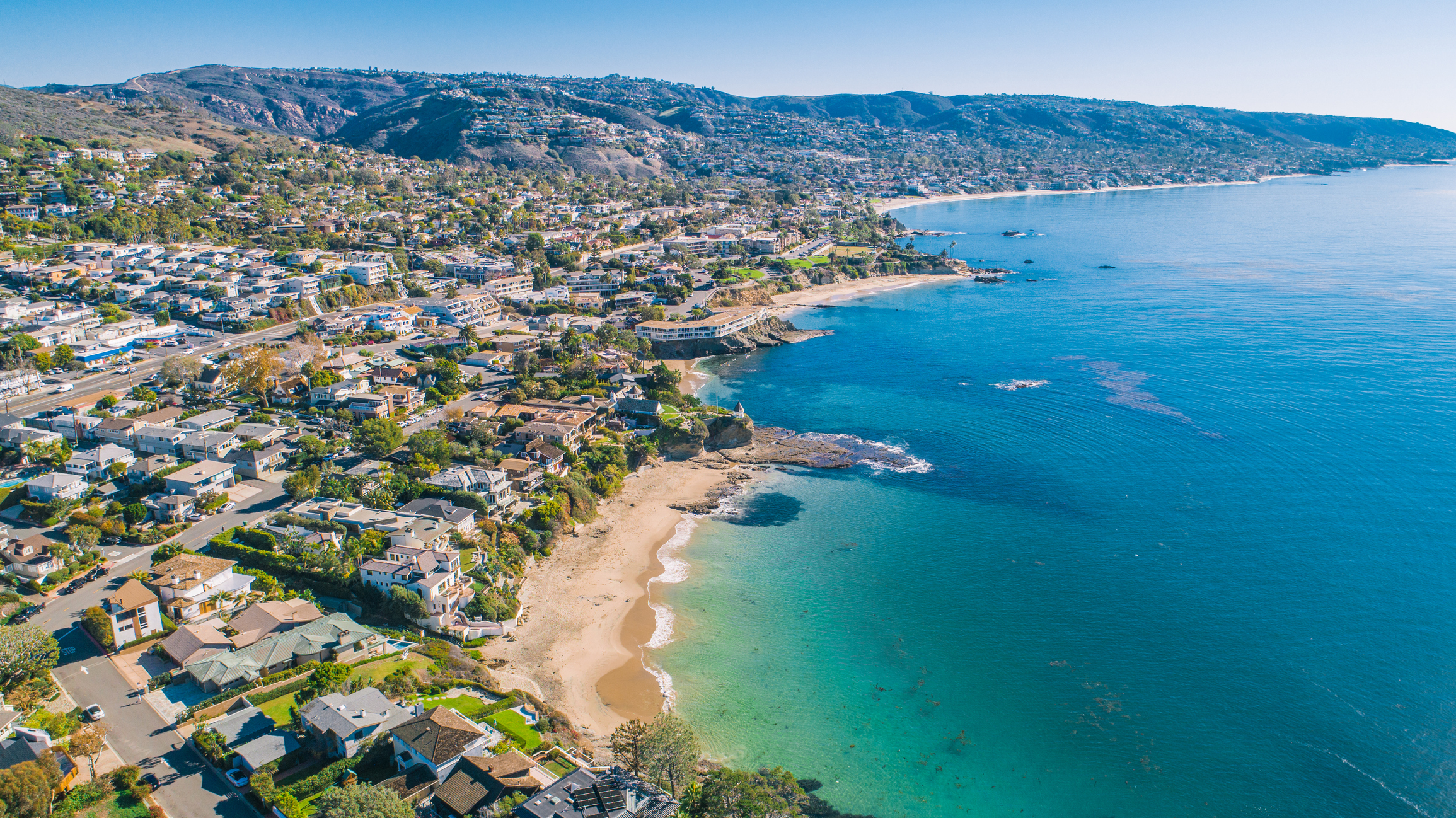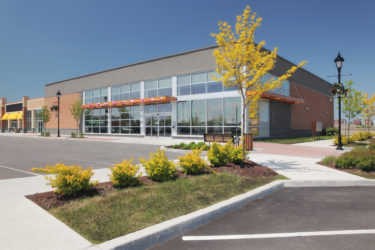Why Coastal California Real Estate Is Worth Holding Forever & How Management-Free Multifamily Syndications Fit Your Bigger Picture Portfolio

This article is a follow up to my original piece featured in Laguna Beach Living, where we explored real estate trends in coastal California and beyond. The article was written in 2020, during the early COVID-19 pandemic days, and my recommendation remains the same: hold your Laguna Beach real estate and do not sell. In this expanded second edition, I would like to show you, the investor, how to protect and grow your portfolio by combining “hold forever” coastal real estate and management-free multifamily DSTs and funds.
The Lock-In Effect: Why Selling Coastal Property is a Mistake
Currently, acquiring local real estate can be extremely difficult for buyers if they finance it. Interest rates and property taxes are high, loan underwriting requirements are tougher, and many current owners are locked into ultra-low-rate mortgages. Because these sellers often cannot buy back, or replace, their prized coastal property at today’s rates and prices, they hold them, which means inventory remains limited and values strengthen further.
Translation: Selling coastal California property, that you cannot repurchase later, is almost always a mistake, even if your current cash flow is near zero or slightly negative. Local property around Laguna, Newport, and Huntington Beach is finite in supply with ever-increasing demand. Letting go of a “slice of paradise” is rarely wise in the long run.
Investor Guidance
In my twenty-eight years of experience, as both an active investor and an investment advisor, I have noticed that success in real estate is defined by you, the investor, and your goals, vision, use cases, and appetite for opportunity. My role is to guide you with honest, transparent insights from decades in the trenches.
If you own local property in Laguna Beach, Newport Beach, Huntington Beach, or almost any Southern California coastal city, congratulations. You have already scored a spot in a limited-supply, high-demand market fortified by what I call the “proximity demand-driving natural amenity barrier to entry.” This is defined by what the beach represents for property owners. You cannot create more coastline, and that scarcity continues to drive long-term value.
When pairing these “hold forever” properties with multifamily DSTs and funds, my firm’s specialty, you can achieve more income, tax benefits, appreciation, and geographic diversification without the hassles of managing non-local properties.
Why Holding Prime Coastal Real Estate Makes Sense
-
Severely Limited Supply Meets Ever-Rising Demand
Wealthy buyers and investors are not hung up on cap rates and cash flow; they are seeking a stable asset, personal enjoyment, and long-term appreciation. As the world’s wealth grows and inflation reduces the value of the dollar, coastal supply remains extremely tight, which drives prices up over time.
-
Benefits Beyond Cash Flow
Most prime coastal properties will not “pencil out” purely on monthly returns at today’s interest rates, prices, rents, and expenses. However, we have a variety of options with local properties. We can live in them or allow a family member to live in them as well as remodel, refinance, or depreciate these properties. These long-term benefits and upside often far outweigh the burden of near-term costs.
-
Sell Rarely, If Ever
In almost every real estate cycle, selling California coastal property has been a regrettable move. From Prop 13 property tax advantages, to simply holding a scarce commodity, these assets typically prove their worth over time. I learned this the hard way by selling local properties before the Great Recession, only to repurchase them later at a higher price. Now, I hold tight and let inflation, plus long-term appreciation, do the heavy lifting.
Introducing Passive Multifamily Options for Income & Diversification
As an investor and advisor, I have been deeply involved in multifamily real estate for twenty-eight years. However, over the past two to three years, I have seen a shift in multifamily deals. Rising interest rates and still-low cap rates make many purchases unappealing, especially with specific markets facing oversupply. Today, that picture is changing.
Because cap rates have risen with interest rates, we are seeing a significant drop in multifamily pricing—often 20–30% lower in many high-growth Sunbelt and Southeast markets. For example, if an apartment project had a net operating income (NOI) of $1 million at a 3.5% cap rate, it might have been valued at around $28.6 million. When the cap rate bumps to 5%, that same NOI is now valued at $20 million—a roughly 30% decrease. This correlation between interest rates and cap rates creates a rare window for buyers to enter at or near the bottom of the market. Residential investors in coastal Southern California have experienced stability and even value increases over the same period where multifamily has declined. This creates a good opportunity to take advantage of the divergence in pricing per property type.
Although I have transcended multiple versions of what success as a real estate investor and advisor means to me, I believe I have finally found the perfect balance in my own portfolio by implementing my “hold forever” philosophy for my coastal properties in Southern California balanced with multifamily DSTs and funds in other markets for income and growth.
Why Multifamily DSTs Work
-
Recovery & Expansion Phases
Historically, multifamily is among the first asset classes to rebound from economic corrections. I like to say, “multifamily slumps are the shortest and shallowest of the CRE asset types.” Today, the over-supply of newly constructed multifamily properties and higher cap rates created a slump in some of the most thriving, high-demand cities/MSAs. With higher cap rates, compromised NOIs, and slowing new construction, we are entering the “buy low” phase and poised to ride into the next market recovery and expansion. DSTs allow investors to take advantage of this market bottom with smaller investment amounts (average in the $500k range) without any management hassles.
-
Steady Demand, Even in Uncertainty
People need a place to live, and quality apartment communities, especially DSTs offered in the Sunbelt and Southeast, have historically maintained strong occupancy and rent growth over time. My favorite markets are those with higher wages, which are accompanied by employment and company growth.
-
Sponsor Quality Is Key
DSTs are managed by sponsors, so you can enjoy a management-free investment. Transparent sponsors with strong track records are key. I have worked with some of the best sponsors and have learned harsh lessons from the “stinkers.” I only invest with sponsors who provide full transparency of all underwriting, financials, fees, and strategies. Lack of transparency in sponsor communications is a huge red flag.
-
Flexible Leverage Options
Many DSTs use lower or fixed-rate leverage, insulating you from interest-rate shocks. A typical hold of 5–10 years, like many real estate and DST structures, aligns nicely with the next expansion. Also, some DSTs are offered free and clear of any loans for a more conservative investment model.
Location Analysis 101: Growth, Barriers, & Proximity
With coastal California real estate, you have the ultimate amenity barrier: the Pacific Ocean. The area is fully built out, offering virtually no room for expansion. That drives desirability and scarcity, which, in turn, drives value. Whether you are buying a beach house in Laguna or a fractional interest in a multifamily DST in the Southeast, three fundamental criteria guide my location analysis:
- Growth: Are wages, employment, rents, and population heading upward?
- Barriers to Entry: Is there limited land or a natural amenity (coastline, built-out urban core, etc.) that caps new supply?
- Close-In Convenience: Is the property near major employers, shopping, and lifestyle attractions?
Conclusion: Your Roadmap to Lasting Wealth
You, the investor, are the most critical piece in this puzzle. With my philosophy, you can achieve immediate cash flow needs by combining the unique, long-term benefits of coastal California real estate with carefully selected multifamily DSTs and funds. If you are looking to reposition equity from one property into a more passive structure or simply want to reduce the headaches of active ownership, considering a DST, or another management-free multifamily property, can provide you with a more diversified portfolio, income, appreciation, and tax benefits.
Ready to Talk?
With nearly three decades of hands-on experience, across almost 1,000 units owned and managed, I am here to offer guidance. If you would like to discuss your investment plans, whether you own property locally or are looking to diversify into multifamily DSTs, reach out anytime. My door is always open for a transparent, investor-to-investor conversation.










